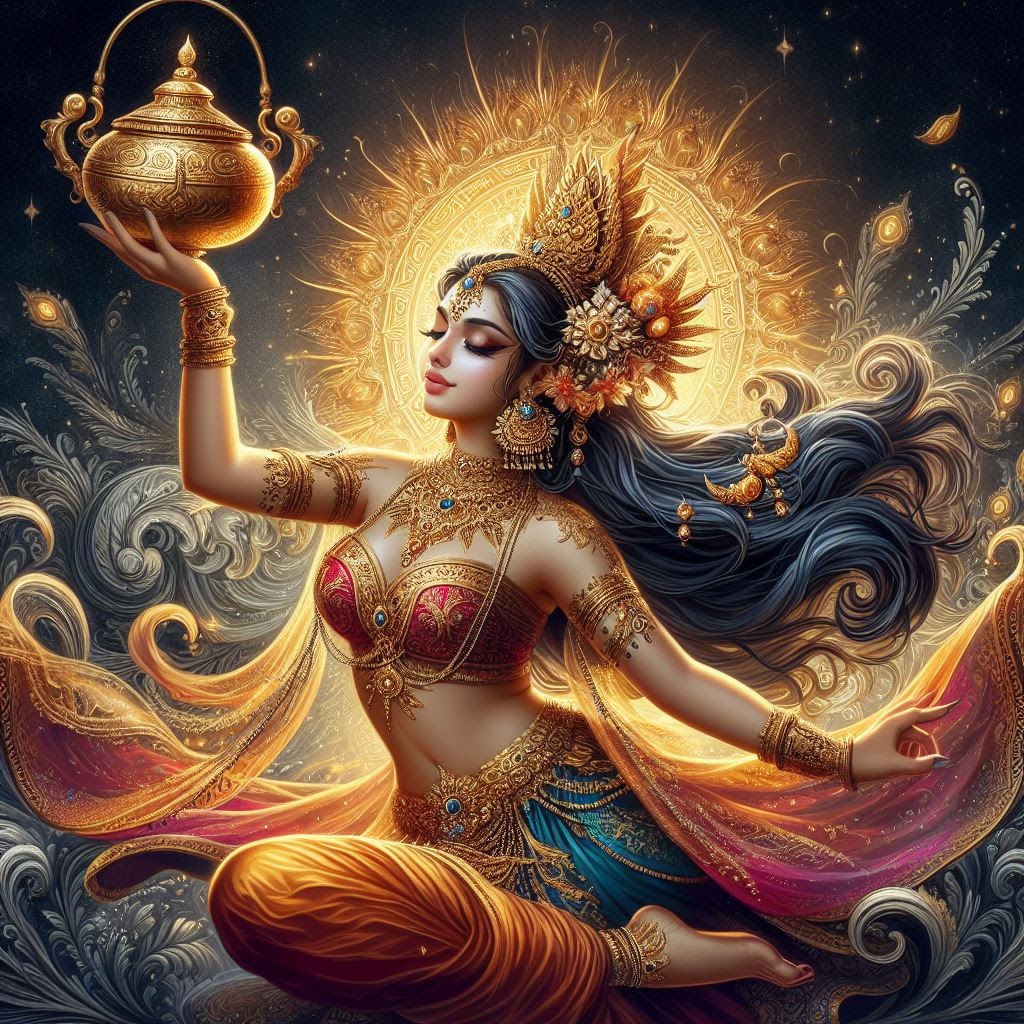Namaste,
For the last post of the challenge, I chose another
topic that interests me. The planetary positions, astrology, and tarot reading
are fascinating. When I saw that the omens listed by Vyasa in
Bhishma Parva mentioned the elements of the zodiac, I dug around a little to
find more.
I created a chart based on my very limited
knowledge, but it was half-correct. However, a PDF shared by Jyotisha Journal helped. So, I combined astrology and
tarot to interpret the events during the Kurukshetra War.
- Three lunations meet twice in the same fortnight- the duration of the latter is shortened by two days (meaning the latter lunar cycle is just 13 days instead of 15)
- The Moon and the Sun have eclipses on the thirteenth day of the lunar cycle
Two eclipses occurred during the Kurukshetra War. The first eclipse was likely lunar, while the latter was a solar eclipse. This (along with other pointers) indicates that Rahu was in Scorpio while Ketu was in Taurus.
It's super strange for that to happen in eighteen days. However, reading Shalya provided new information (and also thanks to the review by Pradeep Bhattacharya added at the end of Shanti Parva for highlighting it).
Balarama arrived right before Bhima and Dhuryodhana's duel. He said, “It is now forty-two days since I left when the Pusya constellation was in the ascendant; I have returned in the ascendancy of Sravana. I must witness this mace-duel of my students.” (Section 34, Shalya Parva).
Now, Balarama left for the tirtha yatra just before the battle began. He even visited the camp at Kurukshetra to talk to Krishna. That means the actual battle duration lasted for forty-two days though they fought for only eighteen days. The remaining days must have been for healing from injuries, clearing the battlefield, and maybe even mourning the deaths of Bhishma, Drona, Abhimanyu, etc. So, two eclipses in forty-two days is not unbelievable.
Planetary Positions
- Sun – Scorpio
- Moon
– Scorpio
- Rahu
– Scorpio
- Ketu
– Taurus
- Mars
– Virgo or Leo (Retrograde)
- Saturn
– Libra (was in retrograde earlier, stayed here for a year with Jupiter in
Vishaka star)
- Jupiter
– Libra (when the war began) and Scorpio (when Karna died)
- Venus
– between Virgo and Capricorn (not enough data, 2 steps behind or after
Sun)
- Mercury
– no mention, but possible between Libra and Sagittarius (one step before
or after Sun) (but possible retrograde based on my hunch)
Signs and Tarot
Scorpio is the main sign where planets seem to be. It is a fixed water sign. It corresponds to the Death card in the tarot (13-Mars planet) and represents the ending of something (automatically, the beginning of another). In this case, it can be the end of the Kauravas, the end of enmity, literal death (war), and the progress to the end of the yuga.
The next major sign is Libra, which comes before
Scorpio. It is a cardinal air sign. It corresponds to Justice (11- Venus
planet) in tarot.
Justice represents karmic justice, truth, honesty, cause and effect, life lessons, and consequences for our actions. In this context, Justice is served to the Kauravas through death and defeat, while the Pandavas get justice through the win. However, they are not without flaws and pay for it through the death of all their dear ones.
The RWS deck shows the Justice card as a man in red
robes holding a sword upright in the right hand and a balance in the left hand.
Someone/ authority who gives a person what’s due.
Jupiter is a thinking planet (for knowledge,
abundance, and learning) but also a judge and jury, though its role is mostly
to help a person do the right thing. In fact, Jupiter moves from Libra to
Scorpio when Karna dies on the 17th day of the war (though we don't know which actual day it would have been). Possibly signifying that it’s time he got the results of his actions (facing death
after being judged by Justice as guilty).
Mars Retrograde
Mars is also called the God of War- a planet of
action and energy. It is ruled by Scorpio. In retrograde, it increases stress,
tension, and tempers. It makes a person lash out or strike blindly
(Ashvatthaman butchering the remaining Pandava warriors and family in their sleep). Anger, frustration,
trauma, feeling cornered, etc., are common signs during this period.
However, it also presents a chance to see things
from a different perspective (Bhagavad Gita?) and understand things at a deeper
level.
Mercury
While there is no mention of Mercury, my gut tells
me it could also be in retrograde. Things are super messy, a trademark of
Mercury retrograde- Failure of technology/ devices (Karna’s wheel getting
stuck), miscommunication (the deliberate half-truth spoken to Drona about his
son’s death), and so on.
(We are just out of Mercury Retrograde that lasted from 1st April to 25th April and are currently in the shadow phase)
Two Eclipses During the War
Historically,
eclipses were seen as an indication of an upcoming war or military action. In
certain cultures, an eclipse would indicate the death of a king/ ruler. If we
consider this, it aligns with how Dhuryodhana died, and Hastinapura had a new
king. Two eclipses may also indicate the opening and closing of the cycle
(though it is calculated for the year). It rewrites patterns, ends the old, and
makes place for the new, which also happened by the end of the war.
That's a lot to process, I know! I fell into a black
hole and wanted to drag you along. ;)
***
With this, we end the month-long challenge. I hope
you enjoyed the posts as much as I did when writing them. Add Draupadi Parashakti to
your bookmarks for easy reference as we upload more content on the site.
Stay tuned for the wrap-up post coming in the next
few days!
I’m participating in #BlogchatterA2Z.
The first and last images are AI and made on Bing. The cards are from the internet.
.jpg)




.jpg)
.jpg)








.jpg)
.jpg)

.jpg)
.jpg)
.jpg)
.jpg)

.jpg)
.jpg)
.jpg)
.jpg)
.jpg)



